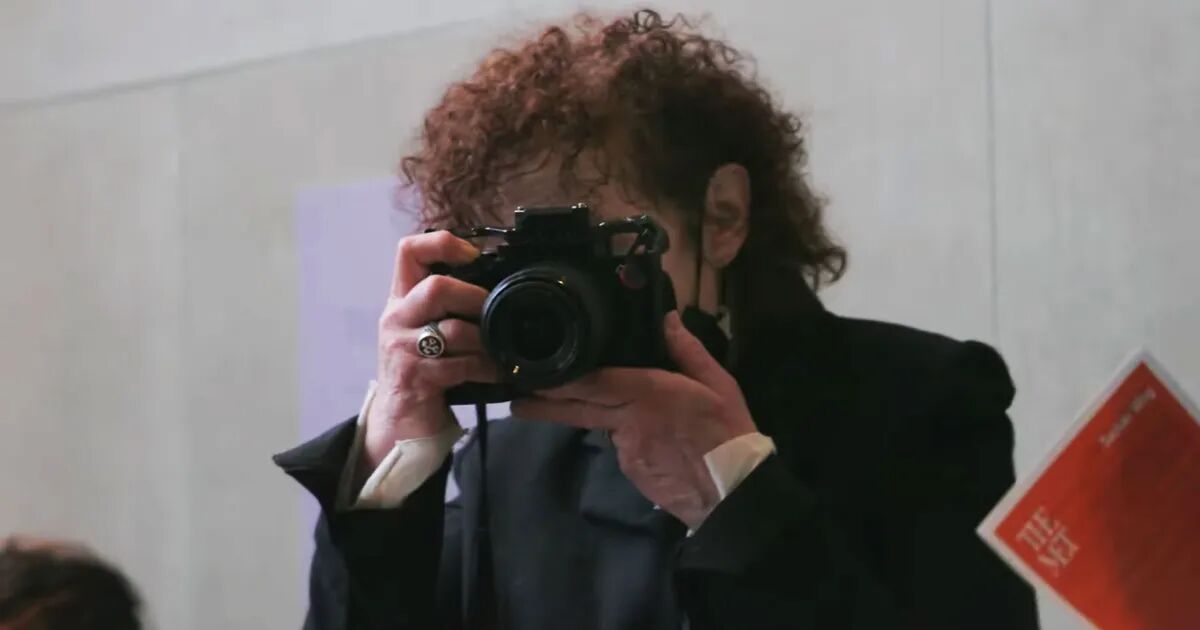Queer photographer Nan Goldin grew up in those heady days of downtown New York. She rubbed elbows with Dreamland actors like Cookie Mueller and Divine and queer artists like Greer Lankton. She photographed her friends in a dreamy but ultimately punishing light as they went through the motions of falling in and out of love, addiction, and abuse. She survived the AIDS epidemic in the 1990s, when most of her friends and queer community didn’t. And when it came time to gear up for the next decade-defining fight, she was ready.
In Laura Poitras’s documentary All the Beauty and the Bloodshed, viewers see firsthand how Goldin harnessed the power of ACT UP to fight a villain perhaps equal to Reagan in stature: the Sackler family, made rich off the highly addictive opioid Oxycontin. If you’ve seen the Hulu series “Dopesick,” you’re probably familiar with how it all went down. What Poitras’s doc illuminates, however, is the very queer specifics of Goldin’s activism. She took inspiration from her days in ACT UP, staging public die-ins in the Sackler Wing of the Metropolitan Museum of Art and forcing institutions like the Guggenheim to be held accountable for taking the Sackler’s “blood money.”
Related: Sarah Schulman’s “Let the Record Show” is Required Queer Reading.
Last year, when Sarah Schulman’s mammoth history of AIDS activism “Let the Record Show” was published, the culture got to take a second look at just how impactful ACT UPs tactics were. “When the organization had decided to do a silent die-in at St. Patrick’s Cathedral during mass,…” Schulman recalled, “Michael Petrelis jumped on his pew and started screaming at the cardinal. “Stop it, stop it. You’re killing us! Stop it.” And pandemonium broke loose.”
View this post on Instagram
Pandemonium was exactly what was called for. How do you get a government to care about the people it’s been ignoring, criminalizing, and stigmatizing for decades? You enter beloved public institutions and get loud. And that’s exactly what Goldin brought to her activism decades later, long after she’d lost so many friends to the AIDS epidemic. Loss was what inspired her to create the activism group P.A.I.N. (Prescription Addiction Intervention Now.) She’d already lived through one major cultural crisis and lost lovers and friends to it—she wasn’t about to go through another.
“It started right after I got out of a clinic,” Goldin explained in an interview with NYFF. “[The film] was going to be both about recovery and pain.”
In late 2017, Goldin read an expose by Patrick Radden Keefe linking the Sackler’s distribution company Purdue Pharma to the opioid crisis. It energized and informed her: most importantly, it pissed her off. She knew she needed to do something. To do it, she borrowed from the toolkit of ACT-UP, staging die-ins and confrontational protests wherever the Sackler name could be found. All the Beauty opens with one such protest in 2017: Goldin and her fellow activists lie down on the floor of the Met’s Egyptian Art exhibit near the Temple of Dendur, previously known as the Sackler Wing. Empty bottles and blood-stained dollar bills fall all around them. The message is clear: this corruption is killing people, and the survivors of this particular epidemic will not be ignored.
Goldin’s ACT-UP tactics worked: she and the activists working beside her have been able to make themselves heard by becoming impossible to ignore. The film is an incredible document of that, and a reminder that without ACT UP’s guerilla tactics, P.A.I.N. might not have been able to accomplish as much as it has.
“I didn’t really think about the risks,” Goldin explained. “When I get obsessed, there’s no stopping me.”
And that, folks, is how you survive a plague. You stay mad, and you stay obsessed.♦
Help make sure LGBTQ+ stories are being told...
We can't rely on mainstream media to tell our stories. That's why we don't lock our articles behind a paywall. Will you support our mission with a contribution today?
Cancel anytime · Proudly LGBTQ+ owned and operated
Read More in Culture
The Latest on INTO
Subscribe to get a twice-weekly dose of queer news, updates, and insights from the INTO team.
in Your Inbox














